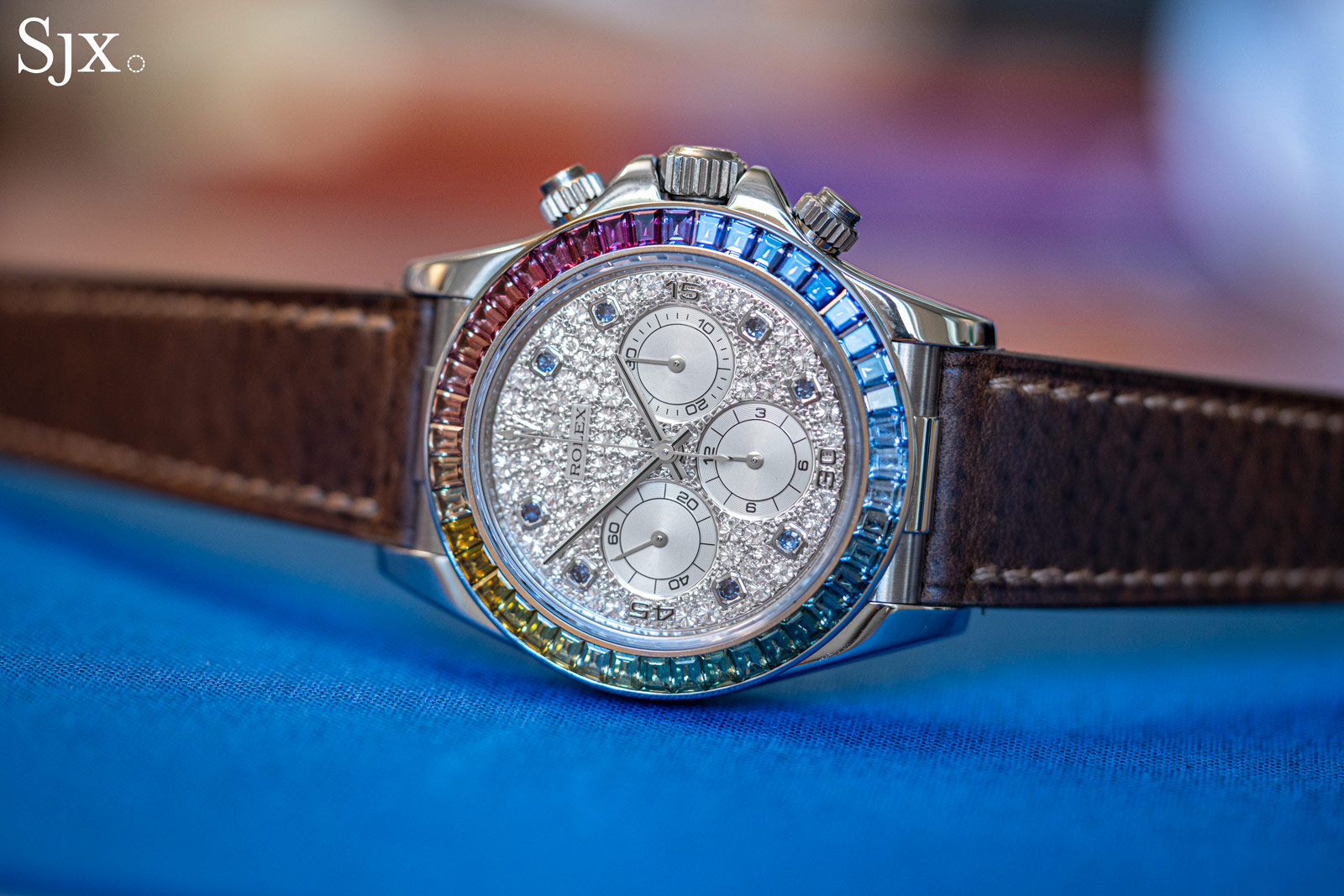Hands On: The First-Ever Rolex Daytona “Rainbow” 16599SAAEC
Zenith powered and sapphire clad.
One of the most valuable watches to go on the block this auction season is the Rolex Daytona “Rainbow” 16599SAAEC. Part of Phillips’ Reloaded auction taking place on November 8, 2024, the Zenith-powered Daytona is the original “Rainbow”, having been produced in 1994, some 18 years before the serially-produced Daytona “Rainbow” was introduced.
Like all automatic Daytona models prior to 2000, this Daytona “Rainbow” is powered by the cal. 4030, which is a Zenith El Primero modified by Rolex. But this Daytona is unique in having a singular model reference of 16599 followed by the suffix “SAAEC”, short for saphir arc-en-ciel, French for “sapphire rainbow”.
A rainbow history
Though the Daytona “Rainbow” is perhaps the most famous gem-set Rolex model today, it took a while to catch on when it was introduced. It debuted as a regular production model in 2012 with the Daytona ref. 116598RBOW in yellow gold and ref. 116599RBOW in white gold.
The Daytona ref. 116599RBOW in white gold
At launch the Daytona “Rainbow” was not the object of frenzied desire as it is now, but by 2018 it was sought after. And that year Rolex debuted the Daytona ref. 116595RBOW in Everose gold that boasted the upgrade of baguette-cut rainbow indices.
The facelift was also applied to the yellow and white gold versions, both of which now sport baguette-cut rainbow indices as well. As with the first generation model, variants with gem-set dials and bracelets also exist.
The Daytona ref. 116595RBOW in Everose gold of 2018
But the Daytona was not the first Rolex Oyster with “rainbow” treatment. That distinction likely goes to the Day-Date dating to the 1980s.
The Day-Date refs. 18058, 18059, and 18188 are known with rainbow gemstones, each executed differently but instantly recognisable with the multi-hued bezel.
A Day-Date ref. 18188 dating to 1983
The original Daytona “Rainbow”
Though the Daytona “Rainbow” ref. 16599SAAEC is being sold publicly for the first time now, it has been known for some years now.
The watch was originally sold in Saudi Arabia, before making its way to a collection in Dubai over a dozen years ago. The next owner was a gentleman who owned a famous collection of vintage watches and is the consignor of the watch.
The ref. 16599SAAEC is essentially a white gold Daytona of the period with the addition of a bezel with rainbow-hued sapphires set in a graduated pattern.
Interestingly, the rainbow bezel differs from today’s Daytona “Rainbow” because the colour graduation is inverted. On today’s models the greens are at three o’clock, while here they are at nine.
The rest of the watch is identical to the regular production model. This has the familiar white gold case with a hood in-between the lugs to create an integrated appearance for the leather strap, which was likely a glossy maroon when the watch was first sold.
Likewise, dial is identical to that of the standard version of the ref. 16599. It’s paved with brilliant-cut diamonds and has brilliant-cut sapphires for hour markers, along with minute numerals at the quarters.
With an estimate of over CHF3 million, the Daytona “Rainbow” is lot 27 in Reloaded: The Rebirth of Mechanical Watchmaking, 1980-1999 on November 8, 2024 in Geneva at the Hotel President. For more, visit Phillips.com.
Back to top.